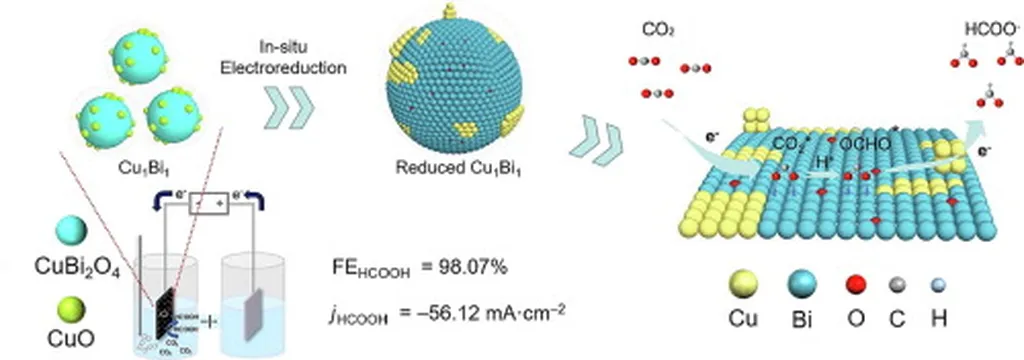In a significant stride towards sustainable energy solutions, researchers have developed a novel catalyst that enhances the conversion of carbon dioxide (CO2) into formate, a valuable chemical with potential applications in fuel cells and energy storage. The breakthrough, published in *Materials Reports: Energy* (translated from Chinese as *Materials Reports: Energy*), is led by Jiafu Qu from the School of Materials Science and Engineering at Suzhou University of Science and Technology in China.
The study focuses on a bimetallic catalyst composed of palladium (Pd) and nickel (Ni) integrated into hollow NiCo2O4 spinel arrays. This innovative design leverages the synergistic effects between Pd and Ni, significantly boosting the efficiency of CO2 hydrogenation to formate. “The Pd-Ni dual-site structure effectively enhances electron accumulation on Pd via charge polarization, leading to a remarkable improvement in formate yields,” explains Qu. This advancement is particularly noteworthy as it reduces the reliance on noble metals like palladium, which are typically expensive and scarce.
The optimized catalyst, designated as Pd5Ni5/NCO@CC, achieved a formate yield of 282.5 molformate molPd−1 h−1 at a relatively mild temperature of 333 K. This high yield, coupled with the catalyst’s stability, presents a promising avenue for scalable and cost-effective CO2 conversion processes. “This strategy of synergistically enhancing catalytic activity via bimetallic sites highlights its advantages in other catalytic fields and practical applications,” Qu adds.
The implications for the energy sector are substantial. Formate, a hydrogen carrier, can be used in fuel cells to generate electricity, offering a cleaner alternative to fossil fuels. The ability to produce formate efficiently from CO2 not only mitigates greenhouse gas emissions but also provides a sustainable feedstock for various industrial applications. The research underscores the potential of heterogeneous catalysis in driving the transition towards a low-carbon economy.
As the world grapples with the challenges of climate change and energy sustainability, innovations like this catalyst represent a beacon of hope. By optimizing the use of noble metals and enhancing catalytic efficiency, this research paves the way for more sustainable and economically viable energy solutions. The findings published in *Materials Reports: Energy* are a testament to the power of interdisciplinary research and its potential to shape the future of the energy sector.

